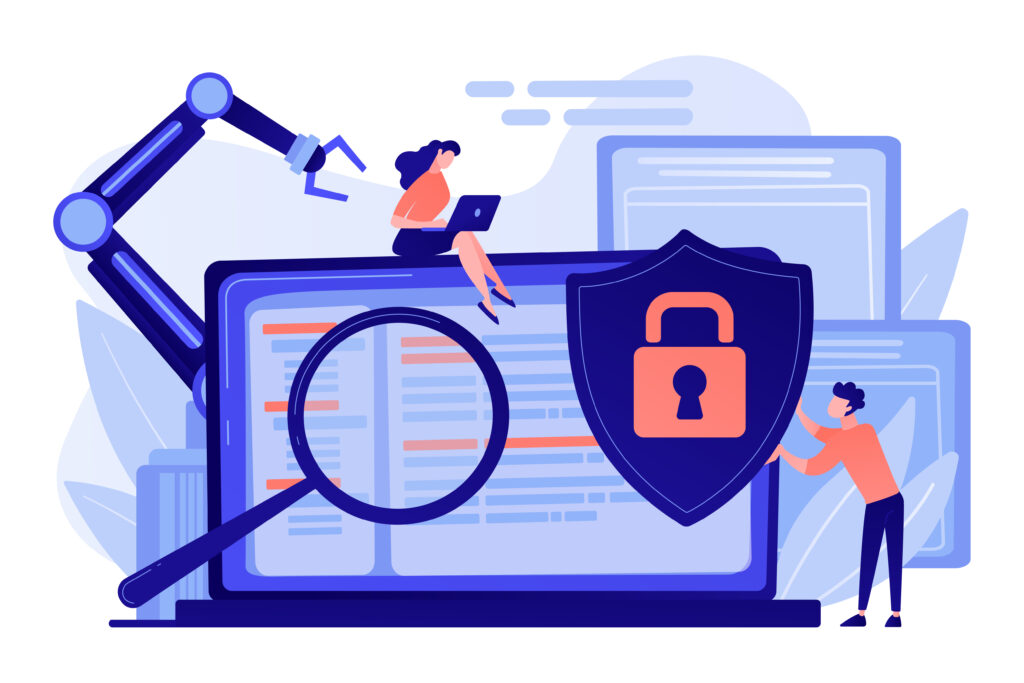Understanding Risk Management in Software Development
Risk management in software development is an essential process aimed at ensuring the successful completion of projects by identifying, evaluating, and addressing potential risks. It includes several key activities:
Identifying Risks:
The process of identifying risks involves recognizing potential threats that could adversely affect the project. This step is crucial because it lays the foundation for the entire risk management process. Effective identification helps ensure that all significant risks are considered and addressed early on. Various methods can be employed to identify risks, including brainstorming sessions, which encourage creative thinking and collective input from team members.

Consultations with stakeholders, such as clients, team members, and subject matter experts, can provide valuable insights into potential risks based on their experiences and perspectives. Additionally, reviewing the project scope and objectives helps to uncover risks associated with specific requirements, deadlines, or technological challenges.
Using these methods in combination enhances the chances of uncovering a comprehensive list of potential risks, setting the stage for a more effective risk management strategy. Identifying risks early not only prepares the team to respond proactively but also promotes a culture of awareness and vigilance within the project environment. By fostering open communication and collaboration during this phase, organizations can create a robust foundation for managing risks throughout the software development lifecycle.
Assessing Risks:
Once risks are identified, the next crucial step is to assess their likelihood and potential impact on the project. This evaluation is essential as it helps prioritize risks based on their severity and probability of occurrence, allowing teams to focus on the most significant threats first. During this assessment, each identified risk is analyzed to determine how likely it is to happen and what effect it could have on project objectives, timelines, budgets, and overall quality.

Various techniques can be used for risk assessment, including qualitative methods, which categorize risks based on their nature and perceived impact, and quantitative methods, which assign numerical values to the likelihood and consequences of risks. This structured approach enables teams to create a risk matrix that visually represents the relationship between likelihood and impact.
By prioritizing risks in this way, project teams can allocate resources more effectively, ensuring that high-priority risks receive the attention they require. Additionally, understanding the relative importance of each risk informs the development of targeted response strategies. Overall, effective risk assessment is a critical component of risk management that empowers teams to make informed decisions and enhances the likelihood of successful project outcomes.
Defining Response Strategies:
After assessing the risks, the next step is to formulate specific response strategies tailored to each identified threat. This process involves creating a comprehensive risk management plan that outlines detailed actions to mitigate, avoid, transfer, or accept each risk based on its severity and impact.

Mitigation strategies aim to reduce the likelihood or impact of a risk. For example, if a technical risk is identified, the team might implement additional testing or invest in training to enhance skills. Avoidance strategies, on the other hand, seek to eliminate the risk altogether by changing project plans or scope to circumvent potential problems.
Transfer strategies involve shifting the risk to another party, such as outsourcing a component of the project or purchasing insurance to cover potential financial losses. Acceptance strategies are used when risks are deemed low-impact or unavoidable; in these cases, the team acknowledges the risk and prepares to manage its effects if it occurs.
By defining these response strategies in advance, teams can ensure that they are prepared to act promptly when risks materialize. A well-structured risk management plan not only enhances the project’s resilience but also fosters a proactive culture that prioritizes risk awareness and management throughout the software development lifecycle.
Monitoring Risks:
Risk management is an ongoing process rather than a one-time task. Continuous monitoring is essential for ensuring that the risk management strategy remains effective and relevant throughout the project’s lifecycle. This involves regularly reviewing the identified risks, assessing any new threats that may arise, and updating the risk management plan accordingly.
Regular risk reviews help teams stay informed about the status of existing risks and the effectiveness of their response strategies. This process may include revisiting risk assessments to determine if the likelihood or impact of certain risks has changed and adjusting priorities as necessary.

In addition, establishing feedback mechanisms allows team members to report new risks or changes in existing ones. This open communication fosters a culture of vigilance and encourages proactive risk management. By staying engaged with the risk landscape, teams can respond promptly to emerging challenges, minimizing their potential impact.
Ultimately, effective monitoring of risks not only enhances a project’s resilience but also contributes to a continuous improvement mindset, ensuring that lessons learned from past projects are integrated into future risk management practices. This proactive approach positions teams to navigate uncertainties with greater confidence and agility.
Responding to Risks:
When a risk materializes, the final step is to execute the predefined corrective actions outlined in the risk management plan. This proactive approach ensures that the impact of the risk is minimized, allowing the project to stay on course and meet its objectives.
Effective response to risks involves implementing the strategies developed during the risk management process, whether they are mitigation efforts, transfer arrangements, or acceptance measures. Timely execution is critical; the sooner the team responds, the better the chances of minimizing disruptions and maintaining project momentum.

In addition to addressing immediate issues, responding to risks also involves evaluating the effectiveness of the actions taken. After a risk event, teams should conduct a review to assess how well the response strategy worked and identify any areas for improvement. This reflection not only aids in refining the current risk management practices but also enhances preparedness for future projects.
By cultivating a culture that emphasizes timely and effective responses to risks, organizations can foster resilience and adaptability. This capability not only safeguards project outcomes but also builds stakeholder confidence, reinforcing the team’s reputation for reliability and excellence in managing challenges.
Types of Risks in Software Development

Recognizing the various types of risks is crucial for effective risk management. The primary categories include:
Technical Risks:
These risks are directly tied to the software development process and encompass:
- Maintenance Issues: Problems that emerge during the software maintenance phase.
- Programming Issues: Difficulties encountered during coding, such as bugs or performance challenges.
- Performance Issues: Concerns related to the software’s efficiency and speed.
Operational Risks:
These risks arise from daily operational activities and include:
- Budgeting Issues: Complications related to budget allocation and management.
- Bottlenecks: Delays or inefficiencies in the development workflow.
- Workforce Shortages: A lack of skilled personnel to complete tasks on schedule.
Business Risks:
These external risks indirectly affect the project:
- Changes in Priorities: Adjustments in organizational priorities that impact the project.
- Lack of Executive Buy-in: Insufficient support from upper management, which can impede project advancement.
Scope Variation Risks:
These risks are linked to changes in project requirements:
- Client and User Feedback: Alterations in requirements resulting from client or user input, potentially leading to delays and budget excesses.
Scheduling Risks:
These are time-related risks that can result in project delays:
- Delays in Milestones: Inability to meet project milestones as scheduled.
- Resource Constraints: Limited resources that impede timely project completion.
Budgetary Risks:
These monetary risks primarily stem from budget overruns:
- Cost Overruns: Surpassing the allocated budget due to unexpected expenses or scope changes.
Steps in Risk Management for Software Development

- Identify Risks:
The first step is to recognize potential threats to the project. This can be achieved by:
1: Reviewing Project Scope and Objectives: Analyzing the project’s goals, scope, and context.
2: Consulting Stakeholders: Engaging team members, clients, and other stakeholders to gather their insights.
3: Using Techniques Like Brainstorming: Conducting brainstorming sessions to uncover potential risks.
- Classify and Prioritize Risks:
After identifying risks, categorize them by their source (technical, operational, business) and prioritize them based on their likelihood and potential impact. This approach helps focus on the most critical risks first.
- Assess Risks:
Evaluate the importance of each risk and its potential effect on the project’s objectives, timeline, budget, quality, or safety. This includes quantifying the likelihood and impact of each risk to calculate its overall risk score.
- Develop an Action Plan:
Create a comprehensive risk management plan that outlines specific corrective actions for each identified risk. Establish predetermined thresholds for action to ensure timely intervention. This plan should include:
1: Risk Mitigation Strategies: Actions aimed at reducing the likelihood or impact of risks.
2: Risk Transfer Strategies: Approaches to transfer risks to third parties (e.g., through insurance).
3: Risk Acceptance Strategies: Decisions to accept certain risks if they are considered low-impact or unavoidable.
- Continuously Monitor and Mitigate Risks:
Implement ongoing monitoring to identify and manage new threats. Regularly review and update the risk management strategy to ensure it remains relevant, timely, and accurate. This involves:
1: Regular Risk Reviews: Periodic assessments to update the risk register
.
2: Feedback Mechanisms: Establishing channels for team members to report new risks or changes to existing risks.
Best Practices for Risk Management in Software Development

- Systematic Approach:
Conduct risk assessments in a systematic manner to ensure thorough identification and mitigation of risks. This includes utilizing standardized tools and methodologies to maintain consistency throughout the process.
- Communication:
Encourage ongoing communication within the team to identify and address new threats. Promote open dialogue and ensure that all stakeholders are kept informed about potential risks and the strategies in place for mitigation.
- Resource Allocation:
Efficiently allocate resources based on the likelihood and impact of risks. Focus on prioritizing resource distribution to tackle high-priority risks first.
- Proactive Mitigation:
Establish proactive mitigation strategies aimed at minimizing the impact of potential threats. This means anticipating risks and implementing preventive measures rather than simply reacting after the risk occurs.
Benefits of Effective Risk Management in Software Development
-
- Cost Reduction:
Effective risk management helps lower expenses related to unaddressed emergencies and prevents additional costs arising from project delays. By identifying and mitigating risks early on, you can avoid expensive rework and emergency measures.
- Improved Productivity:
With risk management in place, the development team can concentrate on core project tasks, confident that all risks are managed. This minimizes distractions and allows the team to operate more efficiently.
- Enhanced Reputation:
Successfully completing software development projects as planned boosts the company’s reputation. Delivering projects on time builds trust with clients and stakeholders, which enhances credibility and opens up future business opportunities
- Cost Reduction:
.
Better Resource Allocation:
Effective risk management enables efficient resource allocation and informed decision-making based on real-time risk data. By prioritizing risks and distributing resources accordingly, you can optimize resource utilization and ensure that critical tasks receive the necessary support.
Overall, risk management is a vital aspect of software development, ensuring successful project completion by identifying, assessing, and mitigating potential risks. This process not only reduces costs and enhances productivity but also strengthens the company’s reputation by delivering projects as scheduled.
[Want to learn more about risk management in software development? Click here to reach us.]
Conclusion
Effective risk management is essential for ensuring project success. By systematically identifying, assessing, and mitigating risks, teams can minimize potential disruptions and focus on delivering high-quality software within budget and on schedule. The benefits of a robust risk management strategy are significant—ranging from cost reduction and improved productivity to enhanced reputation and better resource allocation.
As organizations continue to navigate the complexities of software development, prioritizing risk management will be key to achieving sustainable success and fostering innovation. Partnering with Bobcares for software development support services can further enhance your risk management efforts. With expert guidance and resources, Bobcares can help you effectively manage risks, ensuring that your projects are completed on time and meet your quality standards.







0 Comments